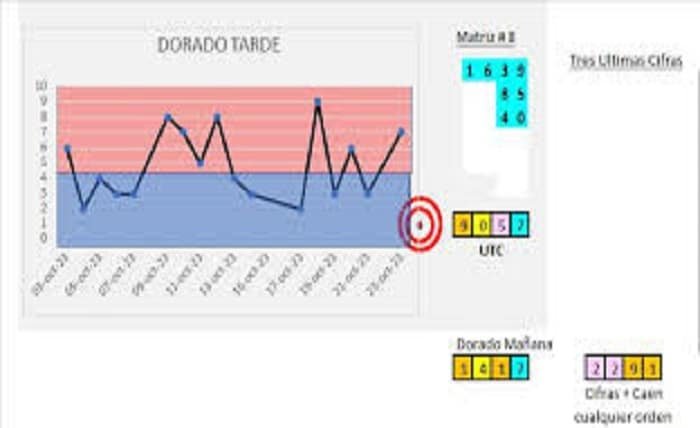
Introduction
In the realm of statistical analysis, “dorado tarde estadísticas” stands out as a significant topic of interest. This phrase, which translates to “late afternoon dorado statistics,” encompasses a range of data and insights relevant to various fields. From environmental studies to fisheries research, understanding the statistics surrounding “dorado tarde” can provide valuable information. In this comprehensive guide, we will delve into the intricacies of “dorado tarde estadísticas,” exploring its relevance, trends, and implications.
What Is “Dorado Tarde Estadísticas”?
“Dorado tarde estadísticas” refers to statistical data collected during the late afternoon period related to dorado fish (Coryphaena hippurus), also known as mahi-mahi. This term is commonly used in fisheries and environmental studies to describe patterns observed in dorado populations and their behavior during late afternoon hours. Understanding these statistics can help researchers and enthusiasts gain insights into the fish’s habits, migration patterns, and ecological impact.
The Importance of Time-Specific Data in Fisheries
Time-specific data, such as that provided by “dorado tarde estadísticas,” plays a crucial role in fisheries research. By analyzing data collected during specific times of the day, researchers can identify patterns in fish behavior, feeding habits, and population dynamics. For dorado, late afternoon statistics can reveal important trends, such as peak feeding times or migratory movements, which are essential for effective management and conservation strategies.
Historical Trends in Dorado Tarde Estadísticas
Examining historical trends in “dorado tarde estadísticas” provides valuable context for current data. Over the years, researchers have observed various shifts in dorado behavior and population metrics during the late afternoon hours. These historical trends can help scientists understand long-term changes and predict future patterns, aiding in the development of sustainable fishing practices and conservation efforts.
Methodologies for Collecting Dorado Tarde Estadísticas
The methodologies employed in gathering “dorado tarde estadísticas” are diverse and often involve a combination of fieldwork and technological tools. Techniques may include sonar mapping, GPS tracking, and observational studies conducted during the late afternoon. Each method provides different types of data, contributing to a more comprehensive understanding of dorado behavior during this specific time of day.
Analyzing Dorado Behavior During Late Afternoon
“Dorado tarde estadísticas” offer insights into the behavior of dorado fish during the late afternoon. Studies often reveal that dorado exhibit specific feeding and social behaviors during this period, influenced by factors such as light conditions and prey availability. Analyzing these behaviors helps researchers understand how dorado interact with their environment and how these interactions impact their overall population.
Environmental Factors Influencing Dorado Tarde Estadísticas
Several environmental factors can influence “dorado tarde estadísticas.” Water temperature, light intensity, and prey abundance are all variables that can affect dorado behavior during the late afternoon. By analyzing these factors alongside statistical data, researchers can identify correlations and better understand how changes in the environment impact dorado populations.
The Impact of “Dorado Tarde Estadísticas” on Conservation Efforts
Conservation efforts can benefit significantly from insights gained through “dorado tarde estadísticas.” Understanding late afternoon patterns helps in creating more effective conservation strategies, such as protected areas or regulated fishing times. By incorporating these statistics into conservation plans, stakeholders can enhance the protection of dorado populations and ensure their sustainability.
Case Studies Utilizing Dorado Tarde Estadísticas
Several case studies highlight the application of “dorado tarde estadísticas” in real-world scenarios. These studies often focus on specific regions or populations of dorado, examining how late afternoon data has influenced management practices or contributed to scientific discoveries. Reviewing these case studies provides practical examples of how statistical insights can be applied to address various challenges.
Future Research Directions for Dorado Tarde Estadísticas
The field of “dorado tarde estadísticas” is continually evolving, with new research avenues emerging as technology and methodologies advance. Future research may focus on integrating more sophisticated data collection tools, exploring new statistical models, or expanding studies to include other time periods. Staying abreast of these developments ensures that researchers and practitioners can adapt their approaches and continue to contribute valuable knowledge.
Practical Applications of Dorado Tarde Estadísticas
“Dorado tarde estadísticas” have practical applications beyond academic research. Fishermen, policy makers, and conservationists can use these statistics to make informed decisions regarding fishing practices, resource management, and habitat protection. By applying statistical insights to real-world scenarios, stakeholders can enhance their strategies and achieve better outcomes for dorado populations.
Conclusion
“Dorado tarde estadísticas” provide a rich source of information for understanding the behavior and dynamics of dorado fish during the late afternoon. Through careful analysis of this data, researchers can uncover valuable insights into dorado behavior, environmental influences, and conservation strategies. As we continue to explore and refine our understanding of “dorado tarde estadísticas,” we pave the way for more effective management and protection of these important marine species.
FAQs
1. What does “dorado tarde estadísticas” mean?
“Dorado tarde estadísticas” refers to statistical data related to dorado fish collected during the late afternoon. This data helps in understanding dorado behavior and population dynamics during this specific time.
2. Why is time-specific data important in fisheries research?
Time-specific data, such as that provided by “dorado tarde estadísticas,” is crucial for identifying patterns in fish behavior and population dynamics. It helps researchers understand factors influencing fish activities and informs effective management practices.
3. What are some common methodologies for collecting dorado tarde estadísticas?
Common methodologies include sonar mapping, GPS tracking, and observational studies conducted during the late afternoon. These methods provide different types of data that contribute to a comprehensive understanding of dorado behavior.
4. How do environmental factors affect dorado tarde estadísticas?
Environmental factors such as water temperature, light intensity, and prey availability can influence dorado behavior during the late afternoon. Analyzing these factors alongside statistical data helps researchers understand their impact on dorado populations.
5. How can “dorado tarde estadísticas” be used in conservation efforts?
Insights from “dorado tarde estadísticas” can inform conservation strategies by identifying critical periods for dorado protection and guiding sustainable fishing practices. This data helps in developing effective management plans to ensure the long-term sustainability of dorado populations.




